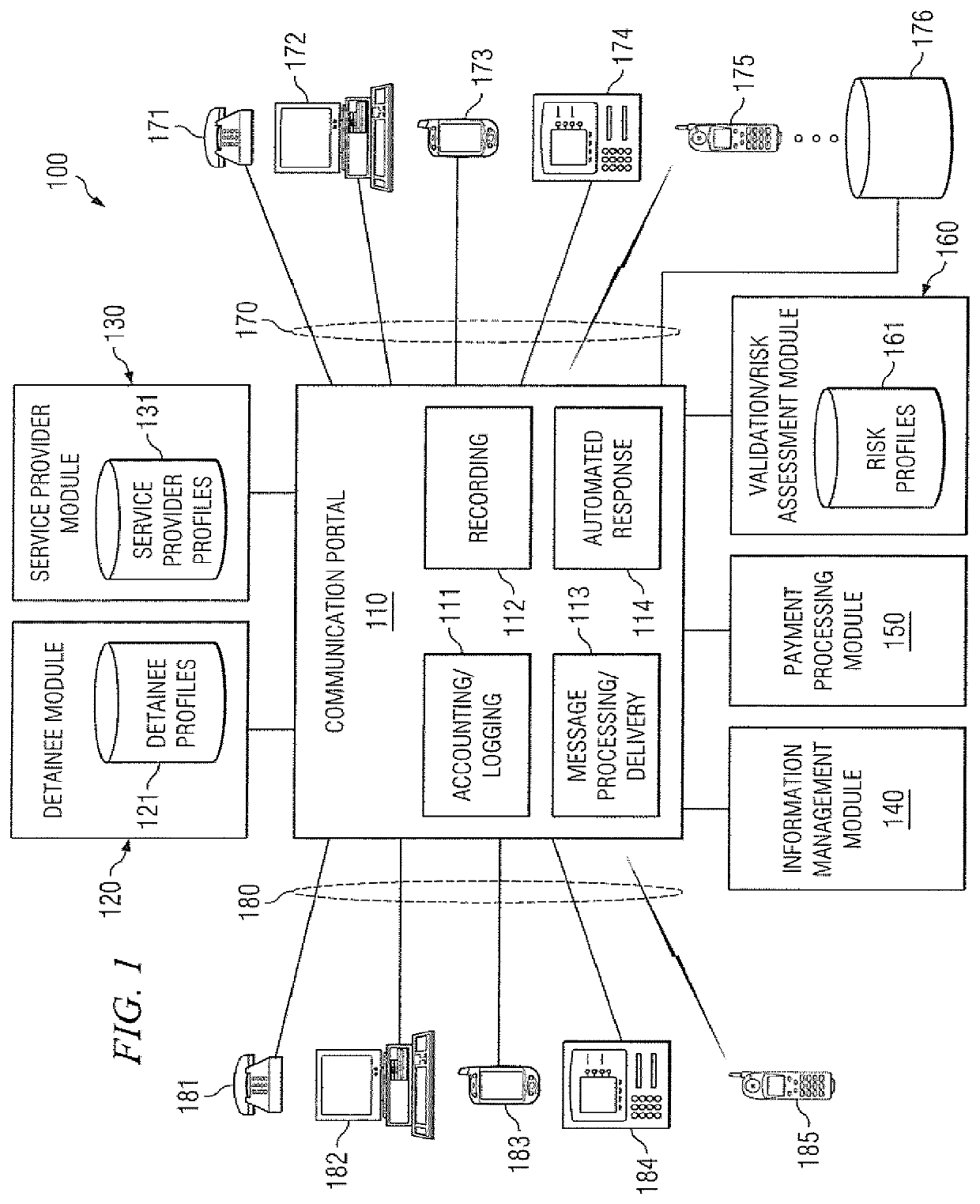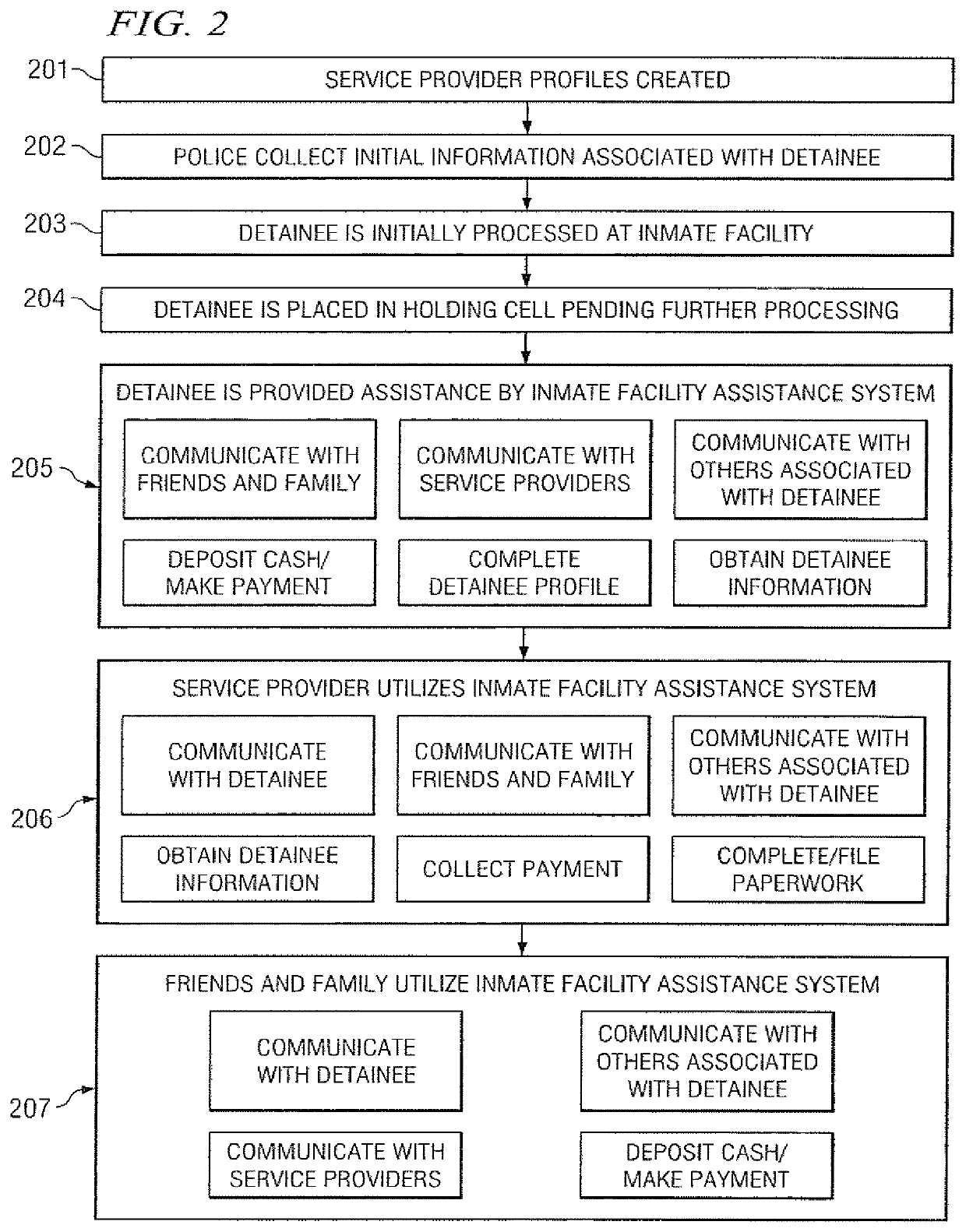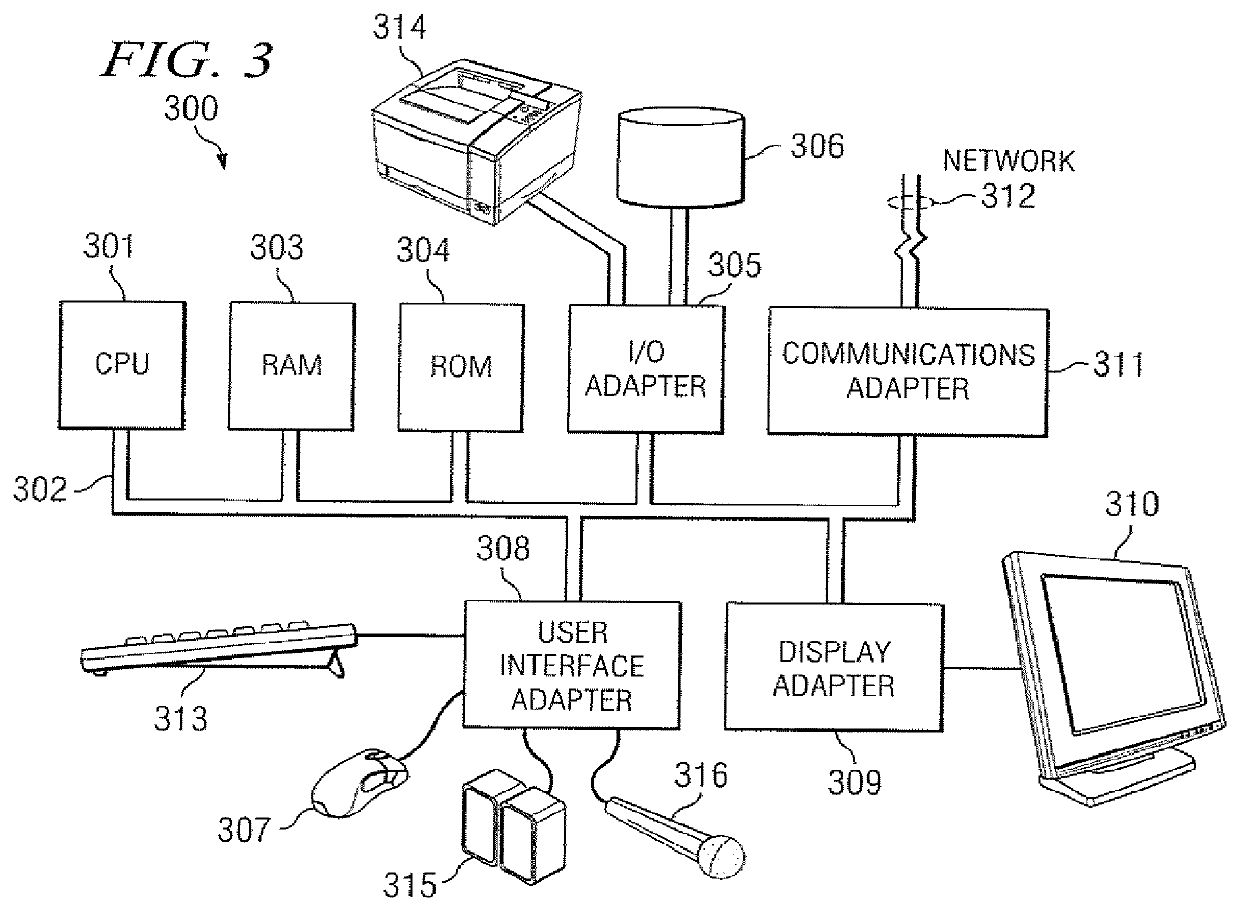Systems and methods for facilitating booking, bonding and release
a technology for applied in the field of facilitating booking and bonding, can solve the problems of general overcrowding in inmate facilities, unsafe environments both for inmates and staff, and achieve the effects of saving costs, facilitating optimization of self-service and automated steps, and reducing labor intensity
- Summary
- Abstract
- Description
- Claims
- Application Information
AI Technical Summary
Benefits of technology
Problems solved by technology
Method used
Image
Examples
Embodiment Construction
[0030]Directing attention to FIG. 1, inmate facility assistance system 100 adapted according to an embodiment of the invention is shown. Assistance provided by embodiments of inmate facility assistance system 100 facilitates detainees (including arrestees, prisoners, and inmates, collectively referred to as residents) securing assistance with respect to their stay at an inmate facility from the proper service providers and / or friends or family members. Moreover, embodiments of inmate facility assistance system 100 provides assistance to service providers, such as attorneys and bail bondsmen, police department personnel, friends and family of detainees, staff of an inmate facility associated with inmate facility assistance system 100, and / or other individuals or entities which are not detainees.
[0031]Inmate facility assistance system 100 of the illustrated embodiment includes communication portal 110 providing communication between various ones of nodes 171-176 and 181-185. Nodes 181...
PUM
 Login to View More
Login to View More Abstract
Description
Claims
Application Information
 Login to View More
Login to View More - R&D
- Intellectual Property
- Life Sciences
- Materials
- Tech Scout
- Unparalleled Data Quality
- Higher Quality Content
- 60% Fewer Hallucinations
Browse by: Latest US Patents, China's latest patents, Technical Efficacy Thesaurus, Application Domain, Technology Topic, Popular Technical Reports.
© 2025 PatSnap. All rights reserved.Legal|Privacy policy|Modern Slavery Act Transparency Statement|Sitemap|About US| Contact US: help@patsnap.com



